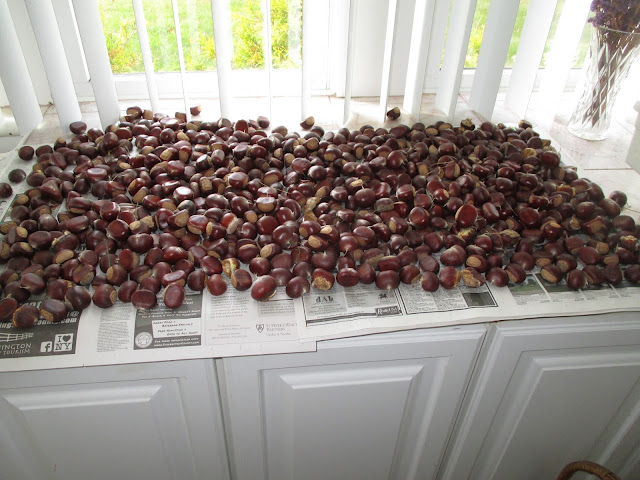 |
| These Are the Chestnuts Now Drying on Our Front Greenhouse Counter |
 |
| This Is a Chestnut That Dropped with the Nuts Inside: the Prickers Are Really Sharp! |
 |
| The Three Neighbor's Trees That Produce Most of Our Nuts |
 |
| The Collar of Chestnut Hulls That Surround Each Trunk |
 |
| A Few Days of Chestnuts Drying on Our Front Greenhouse Counter |
In years past, we planted 100 prime chestnuts among our garlic, hoping squirrels were deterred by their smell. Between ten and 25 germinated successfully and within two years became small shrubs. We now have so many of these small trees so we don't have to plant any more. We also have a few ten years old chestnut trees that are now producing ten to twenty pounds of fruit. Next year we will transplant about twenty small trees now growing in former garlic beds to properly spaced rows in one of our fields.
No comments:
Post a Comment